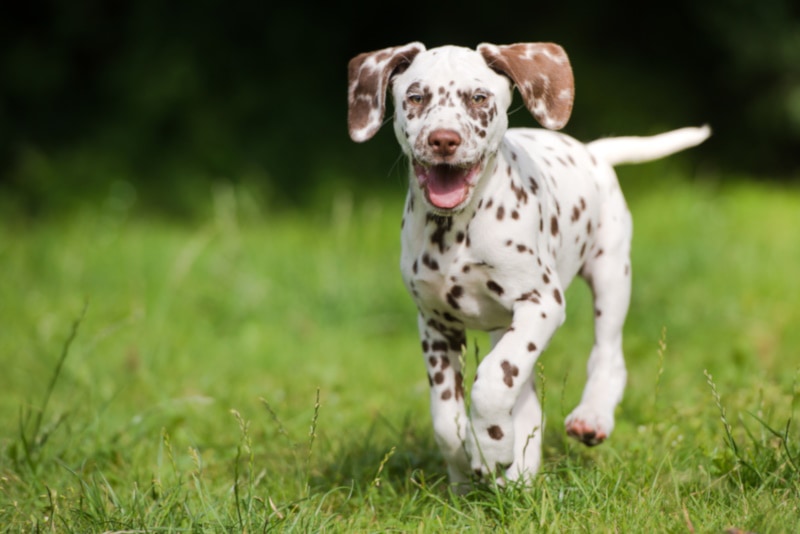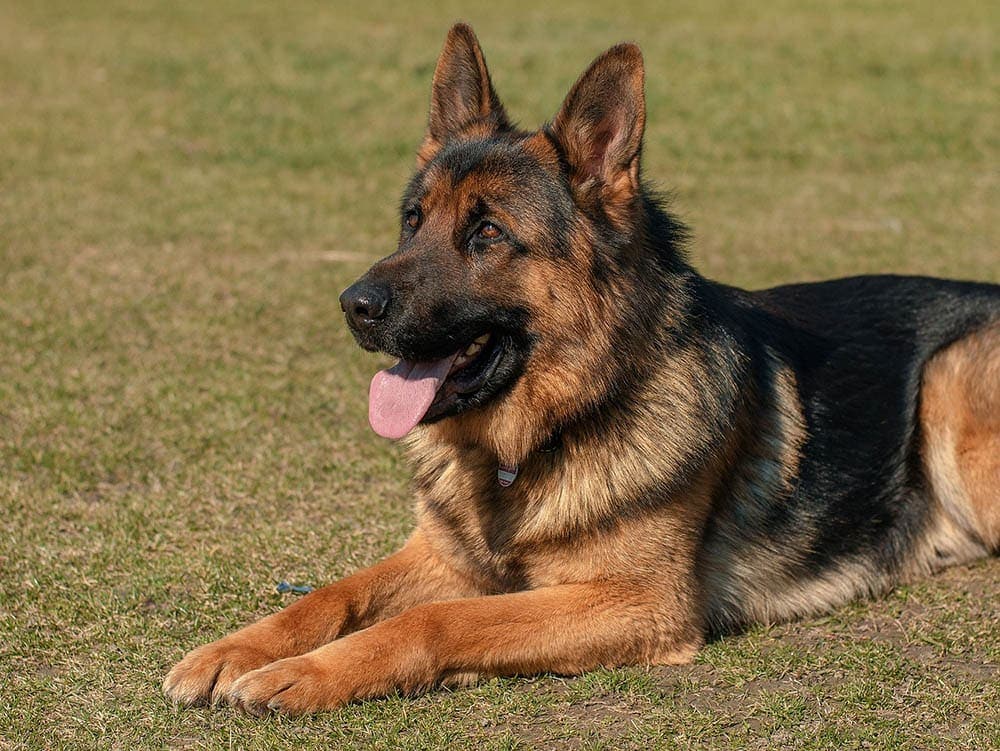10 Dalmatian Colors: Exploring the Surprising Variety
Updated on

Dalmatians are one of the most beloved dog breeds in the world. These spotted beauties entered our hearts thanks to movies and the idea of seeing a dog riding on the front seat of a fire engine. Of course, the spots on a Dalmatian are another reason they are so loved. While black-spotted Dalmatians are what we all think of, did you know there are more colors in the Dalmatian breed? Yes, there are surprising color varieties immersed in the Dalmatian breed. Let’s take a look at 10 of these colors below so you can fall in love with these amazing dogs even more.
The 10 Dalmation Colors
1. Black Spotted

When you think of a Dalmatian, the traditional white with black spots variety is the first that comes to mind. While this color is gorgeous, it is also considered the dominant color for the breed. All other Dalmatian colors are considered recessive genes, meaning both parents must carry the genetic marker for pups to be born with those colors. Any puppies born in other situations will be traditionally black-spotted.
2. Liver

Another beautiful color, liver, is the next most common Dalmatian color. Liver is considered a recessive gene, however, it is AKC recognized for the Dalmatian breed alongside black spotted. Liver is the name given when the Dalmatian coat is covered in chocolate brown spots instead of traditional black.
3. Lemon

Lemon is one of the rarest Dalmatian varieties out there. The spot colors range from yellow to amber. Both parents must have the recessive gene to create one of these puppies. You’ll also find that puppies are born with pale spots that will darken over time and black noses. This color is recognized by the AKC, however, dogs cannot take part in conformation but can be involved with agility fun.
4. Trindle or Tri-Colored
These Dalmatians are black-spotted or liver-based but feature brindle points throughout the body. Like a few other colors, Trindle Dalmatians are recognized by the AKC but aren’t allowed in conformation. The first Trindle Dalmatian photographed was named Captain. He appeared in a photograph in 1881.
5. Sable

Finding a Sable Dalmation is very uncommon. Sable appears as light tan colored spots. It is a two part color that requires testing to ensure it is purebred. There are most likely more Sable Dalmations out there but only one has been confirmed as purebred.
6. Brindle

Brindle is potentially the rarest Dalmation color. For a dog to be labeled as brindle, sable or fawn must be the base color. If a Dalmatian carries brindle coloring but doesn’t have a sable base, brindle colors will develop on the legs, chest, and face. These colors will be so light you may miss them.
7. Orange

The Orange Dalmatian is often misidentified as a Lemon. However, you’ll notice the spots of the orange are darker. The best way to tell the difference is the pigmentation of the nose and mouth. Lemon always has black noses. The orange is brown or pink in color.
8. Blue
The Blue or Gray Dalmation is a breathtaking dog. This color is created when the dilution gene is introduced to a traditional black-spotted dog. Often, this rare color results in dogs with gray mouths, noses, and eyes.
9. Mosaic
Thought to result from a localized mutation of the spotting factor, Mosaic Dalmatians are black spotted Dalmatians with one liver or other colored spot appearing on the animal. This is considered rare and is a treat when it’s found.
10. Two-Tone

This cute color pattern appears when a liver-nosed lemon Dalmatian displays unusual spots. Instead of solid spots, you’ll see light-colored centers with dark, or liver-colored edges. Like many Dalmatian colors, this one is quite rare.
Conclusion
Dalmatians are beautiful dogs that have a place in the hearts of millions.Now, that you’ve seen this list of surprising Dalmatian colors you can enjoy the fun of trying to spot your favorite when you’re out and about.
Featured Image Credit: Rebecca Scholz, Pixabay











